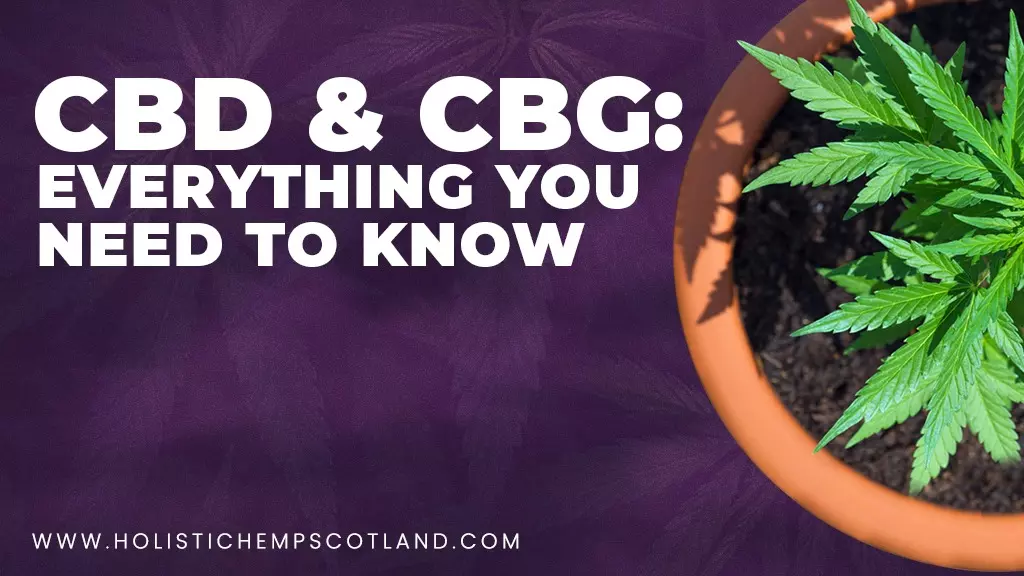Recent Posts
Post Catagories

Here is the low down about CBG and CBD. What is CBG good for? You’ll learn more when you read this informative article
The most frequent chemical components in hemp are CBG and CBD. When administered alone, in combination with other cannabinoids, or in full-spectrum cannabis formulations, they have been demonstrated to have a wide range of applications.
We’ll look at both compounds in depth in this piece to see what they may do for your health and wellness.
What Are Cannabinoids?
Cannabinoids are active compounds which are prevalent in marijuana. Marijuana consists of several chemical compounds that have varied aspects of the plant. Terpenes give aromas and nice flavours. The vital chemicals in marijuana are the cannabinoids.
What Is CBG And CBD?
The two most common chemical components of hemp are CBG and CBD. Both molecules are cannabinoids, which are the components that give cannabis its medicinal and recreational qualities.
Cannabinoids are naturally found in our bodies and are responsible for regulating mood, pain sensitivity, appetite, and memory. THC and CBD are the two most common cannabinoids.
The cannabinoid CBD is the most plentiful in hemp. It is non-psychoactive (i.e., it won’t make you high), has a wide range of medical applications, and is deemed to be safe to consume.
CBG, on the other hand, is only found in the hemp plant during the blooming stage. It has promising medicinal properties, but because of its short blooming window, finding dependable CBG-rich goods is difficult.
What Is Cannabigerol (CBG)?
Cannabigerol (CBG) is just one of the many cannabinoids found in cannabis. It is often referred to as the “stem cell” or “mother” to all other cannabinoids found in the plant.
This parent molecule can eventually transform into THC, CBD, CBC and a few ever lesser-known cannabinoids. It can achieve this by having an enzymatic reaction. Unlike cannabinoids like THC, CBG doesn’t have the ability to get you “high”, as it is non-psychoactive.
Typically, it’s hard to find much CBG in cannabis strains. There isn’t very much of it. Not long after the chemical compound is formed, it usually ends up being whisked away down a chemical pathway to transform into another type of cannabinoid, like the ones we just mentioned.
What Is Cannabichromene (CBC)?
Cannabichromene (CBC) is often found in only very small quantities in most cannabis strains. This is one of the common traits that it shares with CBG, along with being non-psychoactive.
CBC is actually one of the descendants of CBG, like many other cannabinoids.
Do you remember when we spoke about CBG being a parent molecule and having an enzymatic reaction to create various cannabinoids? CBC is one of them!
In terms of its molecular structure, this cannabinoid shares a lot of similarities with CBD and THC, despite not sharing all of their properties.
You can think of them being like brothers and sisters, which CBG as the mother.
CBG Vs CBD: What’s The Difference?
The two most frequent cannabinoids found in hemp are CBG and CBD. They’re found in considerably higher amounts in the plant than THC, although they’re still relatively low throughout the blooming phase (when THC production is highest).
Structure And Sources Of CBG And CBD
Although both cannabinoids have the same chemical formula (C 21 H 30 O 2), their atomic configurations differ. CBG has a cyclohexene ring because the -COOH groups are connected to the carbon atoms in a certain way. Two hydrogen atoms are substituted by hydroxyl groups in CBD (-OH).
Where do these cannabinoids originate? If you’re referring to the cannabis strain, the answer is straightforward: they’re both phytocannabinoids. Hemp is the only place you’ll find them. Their chemical precursors are created naturally within the human body, notably in the cannabis sativa terpenophenol pathway, if you’re talking about where they come from.
What Are The Effects Of CBG?
THC and CBD are both made up of cannabigerolic acid (CBGA). It has no psychotropic properties on its own. Some of its features change when it changes to CBG, while others remain the same.
According to a recent study antibacterial, antifungal, and antiparasitic activities might be all present in CBG. It could also help to relieve inflammation without generating agitation.


Comments are closed.